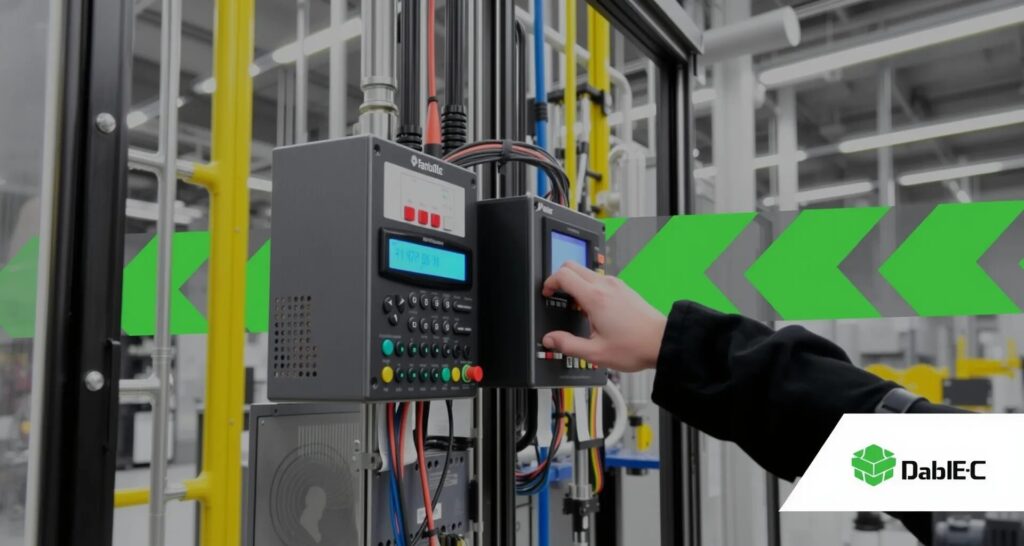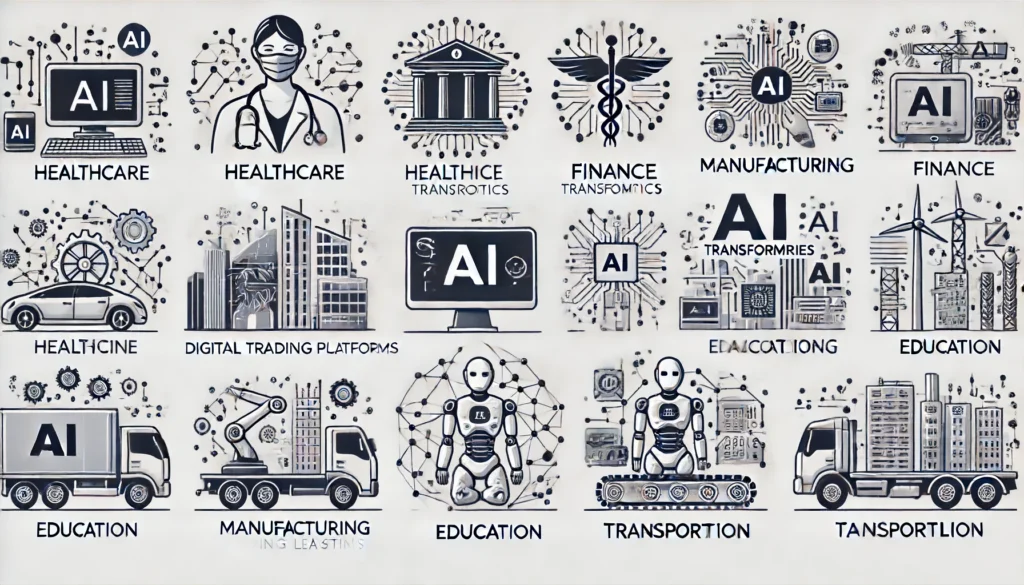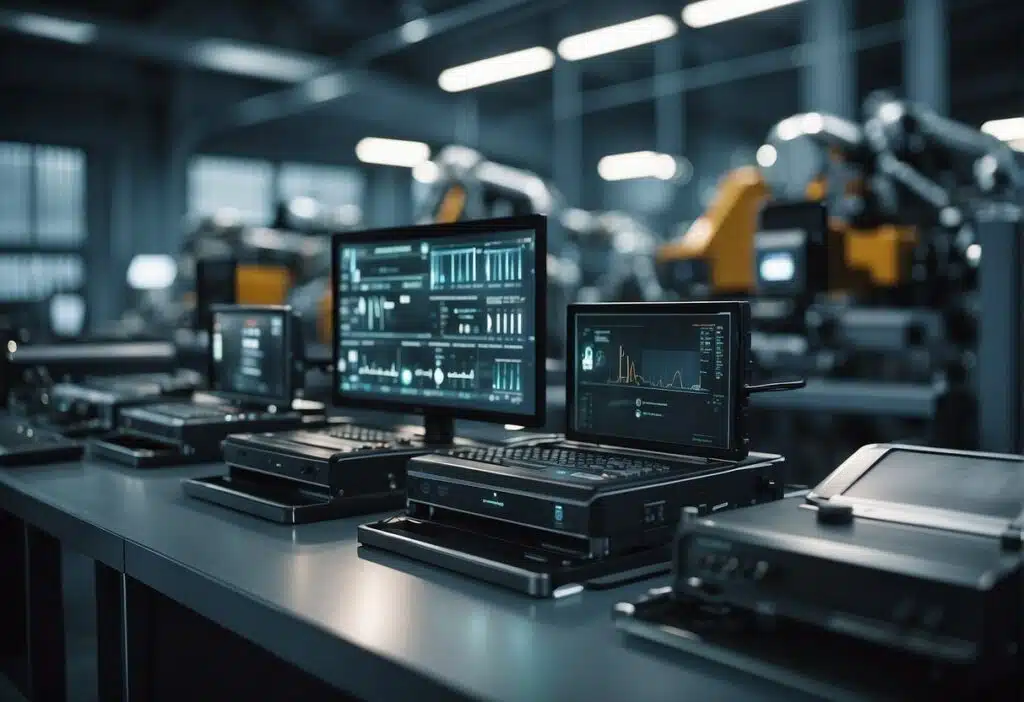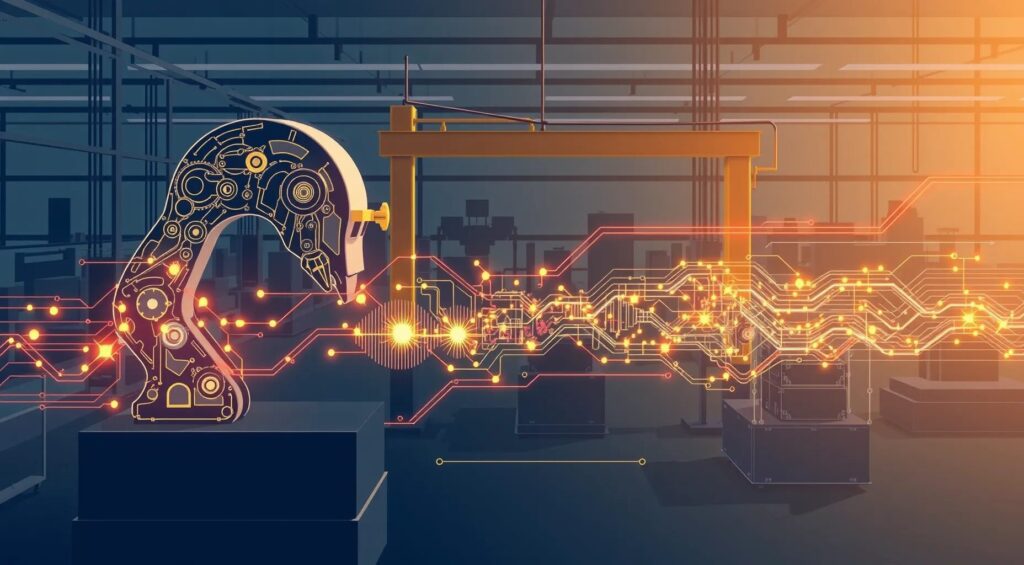
As we stand on the brink of a new industrial revolution, the manufacturing sector faces an unprecedented challenge: how to produce more while wasting less. This balancing act is at the heart of the sustainability movement. The answer, it seems, lies not in the physical world, but in the digital one. Virtual prototyping, particularly through a technology known as 3D-VirtFusion, is emerging as a powerful tool to meet this challenge head-on. But what exactly is 3D-VirtFusion, and how does it contribute to a more sustainable manufacturing process?
The Context: Why Sustainability in Manufacturing Matters
Before we dive into the specifics of 3D-VirtFusion, it’s crucial to understand why sustainability has become such a pressing issue in manufacturing. Traditionally, manufacturing processes have been resource-intensive and waste-generating. According to the World Bank, manufacturing accounts for nearly 20% of global carbon emissions and a significant portion of industrial waste. As environmental regulations tighten and consumer awareness grows, manufacturers are under increasing pressure to reduce their environmental impact.
Sustainability in manufacturing isn’t just about reducing emissions. It encompasses the entire lifecycle of a product—from the extraction of raw materials to production, distribution, use, and eventual disposal. Each stage has its own environmental footprint, and minimizing waste at every stage is crucial for achieving overall sustainability.
What is 3D-VirtFusion? A Closer Look
3D-VirtFusion is more than just a buzzword; it represents a sophisticated integration of 3D modeling, simulation, and data analytics to create highly detailed virtual prototypes. These prototypes are not mere visual representations; they are dynamic models that simulate real-world conditions, allowing manufacturers to explore various design scenarios without producing a single physical prototype.
The Core Components of 3D-VirtFusion
To appreciate the impact of 3D-VirtFusion, it’s important to understand its key components:
- 3D Modeling: At the heart of 3D-VirtFusion is advanced 3D modeling software that can create highly detailed and accurate representations of a product. These models include not just the outer shell of a product, but also internal components, materials, and even physical properties like weight, density, and flexibility.
- Simulation Engines: Beyond static models, 3D-VirtFusion incorporates powerful simulation engines that can mimic real-world conditions. These simulations can include everything from stress tests under various loads to environmental factors like temperature and humidity, providing insights into how a product will perform over time.
- Data Analytics: The vast amount of data generated by these simulations is processed using advanced analytics tools. This allows manufacturers to make informed decisions about design tweaks, material choices, and production processes, all in the name of efficiency and sustainability.
The Environmental Impact: How 3D-VirtFusion Reduces Waste
Now that we have a clear picture of what 3D-VirtFusion is, let’s explore how it specifically contributes to waste reduction in manufacturing. The potential for waste reduction is vast, touching on multiple aspects of the manufacturing process.
Material Efficiency: The First Line of Defense
One of the most significant ways 3D-VirtFusion reduces waste is by optimizing material usage. Traditional prototyping often requires multiple physical models, each made from valuable raw materials. These prototypes are used to test various design iterations, with most ending up as waste.
3D-VirtFusion allows these iterations to occur digitally. Designers can experiment with different materials, shapes, and configurations in a virtual environment. They can see how different materials will affect the product’s performance, lifespan, and environmental impact—all without wasting a single gram of material.
In fact, by using 3D-VirtFusion, companies can achieve up to a 90% reduction in material waste during the prototyping phase. This not only conserves resources but also significantly cuts down on the energy required for material extraction, processing, and transportation.
Eliminating Physical Prototypes: Reducing Waste and Carbon Footprint
Physical prototypes have long been a staple of product development, but they come with a hefty environmental cost. Creating a physical prototype involves not just materials, but also the energy required to shape, assemble, and test the product. Each failed prototype means wasted resources and more carbon emissions.
3D-VirtFusion virtually eliminates the need for these physical prototypes. Through detailed simulations, manufacturers can test everything from product durability to user experience in a digital space. For instance, stress testing a virtual car chassis or simulating the airflow through a jet engine can be done without building a single physical model. This approach can reduce the carbon footprint of the prototyping phase by as much as 75%.
Optimizing Production Processes: Less Waste, More Efficiency
Once a product design is finalized, the next challenge is manufacturing it efficiently. Even with a perfect design, inefficient production processes can generate significant waste. This is where the simulation capabilities of 3D-VirtFusion truly shine.
By simulating the entire production process, manufacturers can identify potential bottlenecks, inefficiencies, and sources of waste before production even begins. For example, a simulation might reveal that a certain assembly process generates excess scrap material, or that a specific machine setting could be adjusted to reduce energy consumption.
With these insights, manufacturers can fine-tune their production processes, ensuring that the final product is made as efficiently as possible, with minimal waste. This not only reduces the environmental impact but also lowers production costs, making the entire operation more sustainable and economically viable.
Lifecycle Analysis: Designing for Sustainability
3D-VirtFusion also plays a crucial role in what’s known as lifecycle analysis (LCA). LCA is a process used to evaluate the environmental impact of a product throughout its entire life—from raw material extraction to disposal. By integrating LCA tools into the virtual prototyping process, 3D-VirtFusion allows designers to make more informed decisions about sustainability.
For example, a designer might use 3D-VirtFusion to simulate the environmental impact of using recycled materials versus virgin materials. They could also evaluate the potential benefits of designing a product for easier disassembly and recycling. These decisions, made early in the design process, can have a profound impact on the product’s overall sustainability.
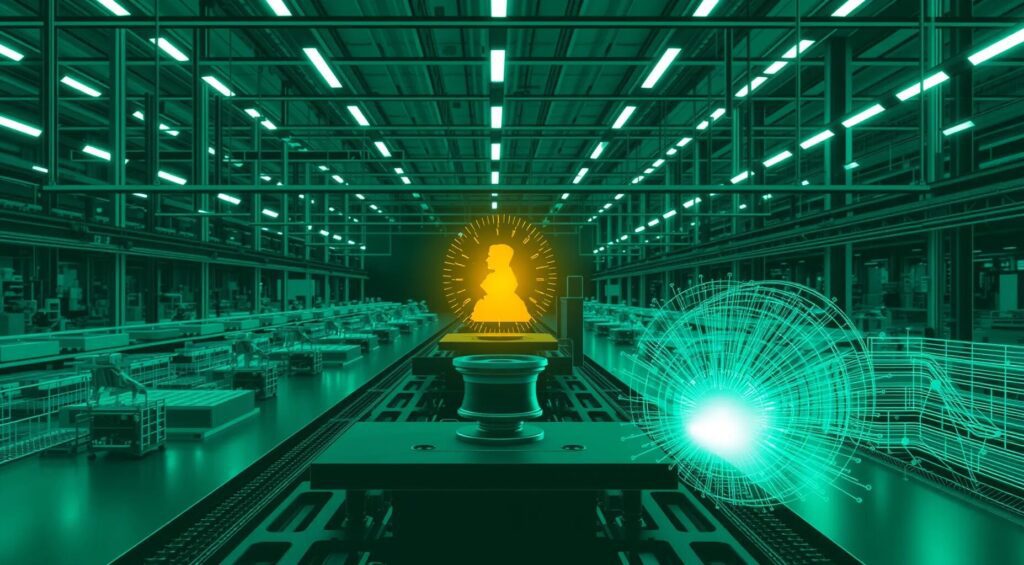
Beyond Waste Reduction: The Broader Implications of 3D-VirtFusion
While waste reduction is a significant benefit of 3D-VirtFusion, the technology’s implications for sustainability go even further. By facilitating more efficient and sustainable product design, 3D-VirtFusion is helping to drive a broader shift towards a circular economy.
The Circular Economy: A New Paradigm for Manufacturing
The concept of a circular economy is gaining traction as an alternative to the traditional linear model of production and consumption. In a circular economy, products are designed with their entire lifecycle in mind, with an emphasis on reducing waste, reusing materials, and recycling products at the end of their life.
3D-VirtFusion is a powerful tool for enabling this shift. By allowing manufacturers to simulate the entire lifecycle of a product, from cradle to grave, they can identify opportunities for reducing waste, extending product life, and maximizing the reuse of materials. This not only makes the manufacturing process more sustainable but also supports the broader transition to a circular economy.
Empowering Innovation in Sustainable Design
Perhaps one of the most exciting aspects of 3D-VirtFusion is its potential to drive innovation in sustainable design. With the ability to quickly and easily test new ideas in a virtual environment, designers are free to explore creative solutions to sustainability challenges.
For instance, a designer might experiment with using biodegradable materials, or with creating products that can be easily disassembled and repurposed at the end of their life. They could even explore entirely new manufacturing processes that are less resource-intensive or that use renewable energy. The possibilities are virtually limitless, and 3D-VirtFusion is the key to unlocking them.
Revolutionizing Manufacturing: 3D-VirtFusion vs. Traditional Methods
Understanding Traditional Manufacturing
Traditional manufacturing has been the backbone of industries for decades. It involves processes like molding, casting, and machining to produce goods. While effective, these methods often come with significant drawbacks.
High Waste Production
One major issue is the amount of waste generated. Excess materials are frequently discarded, leading to environmental concerns and increased production costs. This inefficiency not only impacts the bottom line but also the planet.
Limited Design Flexibility
Traditional methods can struggle with complex designs. Intricate structures require multiple steps and materials, making the process time-consuming and resource-heavy. This limitation stifles innovation and slows down product development.
Enter 3D-VirtFusion: A Game Changer
3D-VirtFusion is transforming the manufacturing sector by addressing the shortcomings of traditional methods. Let’s explore how it excels in reducing waste and enhancing resource efficiency.
Precision Manufacturing
One of the standout features of 3D-VirtFusion is its precision. Using advanced additive manufacturing techniques, it builds products layer by layer, ensuring that every part is created with exact specifications. This precision minimizes errors and reduces the need for rework, cutting down on waste significantly.
Material Efficiency
Unlike traditional methods that often require excess materials, 3D-VirtFusion uses only what’s necessary. This resource-efficient approach not only lowers material costs but also lessens the environmental footprint. By optimizing material usage, it paves the way for more sustainable manufacturing practices.
Complex Designs Made Easy
3D-VirtFusion shines when it comes to producing complex designs. Intricate geometries that are challenging for traditional methods can be effortlessly created with 3D printing. This capability opens up endless possibilities for innovation, allowing designers to push the boundaries of what’s possible without worrying about excessive waste.
Advantages of 3D-VirtFusion Over Traditional Methods
Let’s break down the key advantages that make 3D-VirtFusion a superior choice.
Reduced Waste
By utilizing additive manufacturing, 3D-VirtFusion ensures that materials are used efficiently. This process drastically cuts down on waste, making it a more sustainable option compared to subtractive traditional methods.
Increased Efficiency
3D-VirtFusion streamlines the production process. With fewer steps involved and the ability to create complex parts in a single go, it increases efficiency. This not only speeds up production but also reduces labor costs and minimizes the risk of errors.
Customization and Flexibility
The flexibility of 3D-VirtFusion allows for easy customization. Whether it’s small batches or unique, one-off designs, this technology adapts seamlessly. Traditional manufacturing often struggles with customization, making 3D-VirtFusion a versatile alternative.
Real-World Applications
3D-VirtFusion is already making waves across various industries. From aerospace to healthcare, its ability to produce high-quality, complex parts with minimal waste is proving invaluable. Companies are leveraging this technology to innovate faster and more sustainably.
Aerospace Industry
In aerospace, lightweight and complex components are crucial. 3D-VirtFusion enables the creation of intricate parts that reduce weight without compromising strength, leading to more fuel-efficient aircraft.
Healthcare Sector
The healthcare industry benefits from customized medical devices. 3D-VirtFusion allows for the production of tailored implants and prosthetics, enhancing patient outcomes and reducing material waste.
Conclusion: The Future of Sustainable Manufacturing
As the manufacturing industry continues to grapple with the challenges of sustainability, technologies like 3D-VirtFusion offer a clear path forward. By enabling manufacturers to design, test, and refine products in a virtual space, this technology is not only reducing waste but also driving innovation in sustainable design.
The impact of 3D-VirtFusion extends far beyond the factory floor. By supporting the shift towards a circular economy, this technology is helping to lay the foundation for a more sustainable future—one where products are designed with their entire lifecycle in mind, and where waste is minimized at every stage of the process.
In the coming years, we can expect to see 3D-VirtFusion and similar technologies play an increasingly central role in the push for sustainability in manufacturing. As more companies adopt these tools, the benefits will only multiply, leading to a more efficient, sustainable, and innovative manufacturing industry.
The future of manufacturing is digital, and with tools like 3D-VirtFusion, it’s also sustainable. The next generation of products will not only be smarter and more efficient but also greener, paving the way for a more sustainable world.
Journal References
- Gao, W., Zhang, Y., & Niu, W. (2021).Virtual Prototyping in Sustainable Manufacturing: A Review of Applications and Benefits.Journal of Cleaner Production, 310, 127431.
- This paper explores the various applications of virtual prototyping in sustainable manufacturing, focusing on the benefits it brings in terms of waste reduction and efficiency improvements.
- Thompson, M. K., & Choi, H. (2020).The Role of Virtual Prototyping in Enhancing Sustainable Design: A Lifecycle Perspective.Sustainability, 12(12), 5059.
- The authors discuss how virtual prototyping technologies, including 3D-VirtFusion, contribute to sustainable design by enabling lifecycle analysis and reducing the need for physical prototypes.
- Wang, H., Xu, X., & Li, Z. (2019).Environmental Impact Assessment of Virtual Prototyping in Product Development.Journal of Manufacturing Processes, 45, 374-381.
- This study provides an in-depth analysis of the environmental impacts of using virtual prototyping in product development, emphasizing material efficiency and waste reduction.
- Bhamra, T., & Lofthouse, V. (2007).Design for Sustainability: A Practical Approach.Ashgate Publishing.
- Although not a journal article, this book is a comprehensive resource on sustainable design practices, including the role of virtual prototyping in minimizing environmental impact.
- Monostori, L., Váncza, J., & Kumara, S. R. T. (2006).Agent-based Systems for Manufacturing: A State-of-the-art Survey.CIRP Annals, 55(2), 491-512.
- This article provides an overview of advanced manufacturing systems, including virtual prototyping, and their potential for enhancing sustainability in manufacturing processes.
